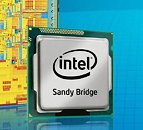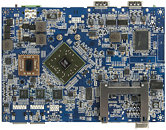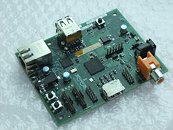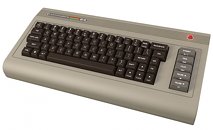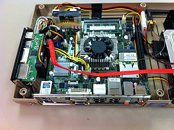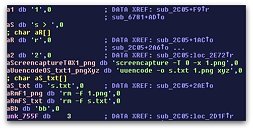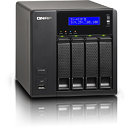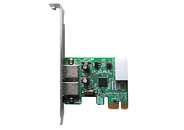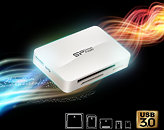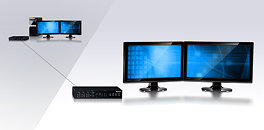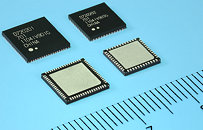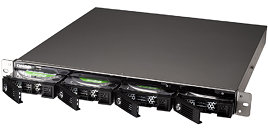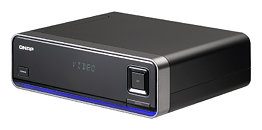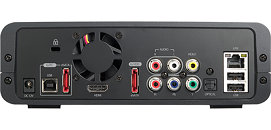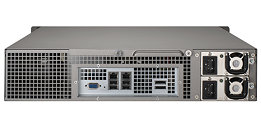Apr 24th, 2025 15:22 EDT
change timezone
Latest GPU Drivers
New Forum Posts
- 5060 Ti 8GB DOA (268)
- To distill or not distill what say ye? (100)
- Cracks in my cpu waterblock should I be concerned? (5)
- Asus Rx570 o4g cannot losd drivers error code 43 (16)
- Choosing an Internal HDD (9)
- Oblivion Remastered (2)
- What's your latest tech purchase? (23588)
- Waterloop 24/7 or no? (19)
- Are the 8 GB cards worth it? (162)
- I dont understand the phone OS world..... (42)
Popular Reviews
- NVIDIA GeForce RTX 5060 Ti 8 GB Review - So Many Compromises
- Colorful iGame B860M Ultra V20 Review
- ASUS GeForce RTX 5060 Ti TUF OC 16 GB Review
- Crucial CUDIMM DDR5-6400 128 GB CL52 Review
- ASRock X870E Taichi Lite Review
- Upcoming Hardware Launches 2025 (Updated Apr 2025)
- Sapphire Radeon RX 9070 XT Pulse Review
- Sapphire Radeon RX 9070 XT Nitro+ Review - Beating NVIDIA
- AMD Ryzen 7 9800X3D Review - The Best Gaming Processor
- NVIDIA GeForce RTX 5060 Ti PCI-Express x8 Scaling
Controversial News Posts
- NVIDIA GeForce RTX 5060 Ti 16 GB SKU Likely Launching at $499, According to Supply Chain Leak (182)
- NVIDIA Sends MSRP Numbers to Partners: GeForce RTX 5060 Ti 8 GB at $379, RTX 5060 Ti 16 GB at $429 (127)
- NVIDIA Launches GeForce RTX 5060 Series, Beginning with RTX 5060 Ti This Week (115)
- Nintendo Confirms That Switch 2 Joy-Cons Will Not Utilize Hall Effect Stick Technology (105)
- Nintendo Switch 2 Launches June 5 at $449.99 with New Hardware and Games (99)
- Sony Increases the PS5 Pricing in EMEA and ANZ by Around 25 Percent (85)
- NVIDIA PhysX and Flow Made Fully Open-Source (77)
- Windows Notepad Gets Microsoft Copilot Integration (75)
News Posts matching #Linux
Return to Keyword BrowsingChristmas Special: The PC Technology of 2011
Welcome to the TechPowerUp 2011 PC technology Christmas special. We hope that you will enjoy reading it while tucking into your turkey, Christmas presents and a little too much wine... In this article, we go through the technology of 2011 that has had the most significance, the most impact and was generally the most talked about. It's not necessarily the best tech of 2011 which is the most significant though, since lemons can be just as significant as the ground-breakers in how they fail to deliver - and the backlash that goes with it.
January: Intel Sandy Bridge i5 & i7
Released on January 9th, the new Intel Core i5 & i7 processors were based on Intel's second generation Core architecture built on a 32 nm production process (HEXUS review). They included an IGP (Integrated Graphics Processor) physically on the same piece of silicon along with HyperThreading. These new dual and quad core processors soundly beat all previous generations of Intel processors in terms of processing performance, heat, power use, features and left AMD in the dust. Therefore, Intel badly needed some competition from AMD and unless you have been living under a rock, you will know how that turned out in October with the launch of Bulldozer. Sandy Bridge was a sound win and is generally considered to be the only architecture worth considering at this point. The i5-2500K is currently at the sweet spot of price/performance. It comes at a stock speed of 3.3 GHz, but typically overclocks to an amazing 4.5 - 5 GHz with a decent air cooler and without too much difficulty in getting there. Models in the budget i3 range were released at various times later. See this Wikipedia article for details.
January: Intel Sandy Bridge i5 & i7
Released on January 9th, the new Intel Core i5 & i7 processors were based on Intel's second generation Core architecture built on a 32 nm production process (HEXUS review). They included an IGP (Integrated Graphics Processor) physically on the same piece of silicon along with HyperThreading. These new dual and quad core processors soundly beat all previous generations of Intel processors in terms of processing performance, heat, power use, features and left AMD in the dust. Therefore, Intel badly needed some competition from AMD and unless you have been living under a rock, you will know how that turned out in October with the launch of Bulldozer. Sandy Bridge was a sound win and is generally considered to be the only architecture worth considering at this point. The i5-2500K is currently at the sweet spot of price/performance. It comes at a stock speed of 3.3 GHz, but typically overclocks to an amazing 4.5 - 5 GHz with a decent air cooler and without too much difficulty in getting there. Models in the budget i3 range were released at various times later. See this Wikipedia article for details.
VMware Expands its View, Brings Windows Virtual Desktop to Kindle Fire, Mac and Linux
VMware, Inc., the global leader in virtualization and cloud infrastructure, today announced the availability of new VMware View Clients for Kindle Fire, Mac and Linux, along with updates to its popular VMware View Clients for Android and iPad. Available today as technology previews, the new VMware View Clients for Mac and Linux allow IT organizations to empower more agile, productive and connected workforce or school communities by enabling an easy to access, high fidelity desktop virtualization experience optimized for the device of their choice.
"More and more people want the freedom to choose the device that best fits their computing needs in school and into the workplace," said Pat Lee, director, end user clients, VMware. "With the new VMware View Clients, both IT and end users win with a complete, secure and easily-accessible virtual desktop on the devices that best meet their needs."
"More and more people want the freedom to choose the device that best fits their computing needs in school and into the workplace," said Pat Lee, director, end user clients, VMware. "With the new VMware View Clients, both IT and end users win with a complete, secure and easily-accessible virtual desktop on the devices that best meet their needs."

VIA Announces Android Support for Embedded x86 Boards
VIA Technologies, Inc, a leading innovator of power efficient x86 processor platforms, today announced Android support for VIA x86 embedded platforms, starting with support for the VIA EITX-3002 Em-ITX board. Running Android on an x86 platform offers increased flexibility, great multimedia support and cost saving advantages for embedded applications such as in-vehicle entertainment and interactive kiosks.
Key advantages for Android on x86 include leverage of Android development resources and existing apps, rich I/O flexibility, greater CPU performance as well as higher display resolutions of up to 1920 x 1080. In addition VIA has released SMART ETK, an Embedded Tool Kit which allows monitoring and control of peripheral devices through the Android OS, allowing for greater environmental control of kiosk and other installed environments.
Key advantages for Android on x86 include leverage of Android development resources and existing apps, rich I/O flexibility, greater CPU performance as well as higher display resolutions of up to 1920 x 1080. In addition VIA has released SMART ETK, an Embedded Tool Kit which allows monitoring and control of peripheral devices through the Android OS, allowing for greater environmental control of kiosk and other installed environments.
Raspberry Pi: the Upcoming $25 1080p-Capable ARM-Based Hobby Computer
Yes, you heard that right, when completed, the Raspberry Pi foundation will be selling a credit card sized computer running Linux that can plug into your television and play H.264 1080p30 videos. Raspberry Pi is the somewhat cheekily-named UK registered charity which has been set up to design and build a very low cost computer that is targeted for use in computer science lessons in schools, to "put the fun back into learning computing." Why, was it ever not fun?! However, such a simple and cheap general purpose gadget has the potential for many other uses than the classroom, as the world is full of inventive tech-minded people that can tinker with something like this and build innovative projects with them, perhaps by using several of these together.
The product will come in two configurations, a $25 Model A with 128 MB SDRAM & $35 Model B with 256 MB SDRAM and both will come with the same 700 MHz Broadcom BCM2835 media processor featuring an ARM11 (ARM1176JZF-S) core, Broadcom GPU core, DSP core and support for Package-on-Package (PoP) RAM. We expect that in this day and age, most people will go for the 256 MB model, which is still a very small amount of RAM. For those that want to get the most out if this device, the website - www.raspberrypi.org - has a forum and a wiki with tons of technical details on the device, including benchmarks and links to many other news stories & blogs about the product. There's even a shop, although at the moment, it's only selling keyboard stickers of the foundation's logo.
The product will come in two configurations, a $25 Model A with 128 MB SDRAM & $35 Model B with 256 MB SDRAM and both will come with the same 700 MHz Broadcom BCM2835 media processor featuring an ARM11 (ARM1176JZF-S) core, Broadcom GPU core, DSP core and support for Package-on-Package (PoP) RAM. We expect that in this day and age, most people will go for the 256 MB model, which is still a very small amount of RAM. For those that want to get the most out if this device, the website - www.raspberrypi.org - has a forum and a wiki with tons of technical details on the device, including benchmarks and links to many other news stories & blogs about the product. There's even a shop, although at the moment, it's only selling keyboard stickers of the foundation's logo.

Windows 8 Secure Boot Feature: Not So Secure?
We have brought you the potential perils of the upcoming UEFI Forum-implemented - www.uefi.org - Windows 8 secure boot feature here, here and here. However, it appears that it may not be so 'secure' after all, since there appears to be a surefire way to circumvent it, at least for the moment, while it's in development.
Softpedia has scored an exclusive interview with security researcher Peter Kleissner, who has created various Windows (XP, Server 2003 etc) "bootkits", which allow OS infection at the highest privilege level, giving unrestricted access to the whole of the PC. His latest one, called Stoned Lite, shows how the Windows 8 secure boot process, still in development, can be subverted, as it stands. He is planning to release details of how the code works at the upcoming International Malware Conference (MalCon) - malcon.org - that will take place in India on November 25th. It appears that the real vulnerability exists in the legacy BIOS boot procedure, not in Microsoft's implementation of secure boot, as Kleissner said:
Softpedia has scored an exclusive interview with security researcher Peter Kleissner, who has created various Windows (XP, Server 2003 etc) "bootkits", which allow OS infection at the highest privilege level, giving unrestricted access to the whole of the PC. His latest one, called Stoned Lite, shows how the Windows 8 secure boot process, still in development, can be subverted, as it stands. He is planning to release details of how the code works at the upcoming International Malware Conference (MalCon) - malcon.org - that will take place in India on November 25th. It appears that the real vulnerability exists in the legacy BIOS boot procedure, not in Microsoft's implementation of secure boot, as Kleissner said:
The problem with the legacy startup is that no one verifies the MBR, which makes it the vulnerable point. With UEFI and secure boot, all the boot applications and drivers have to be signed (otherwise they won't be loaded). You can compare it to TPM, although Arie van der Hoeven from Microsoft announced that the secure boot feature is mandatory for OEMs who want to be UEFI certified. It is a good message that security is not an option.
Commodore 64 Replica: The Ultimate PC Enthusiast Retro PC Gets An Upgrade
The original 8-bit Commodore 64 computer was very popular in the early 1980s, but the original company eventually closed down in the 1990s, having launched their 16-bit Amiga range in the meantime as the C64s successor. For a while now, replica C64 models, packed with the latest PC technology, have been made by Commodore USA, a different company that has purchased the original Commodore brand.
Since last summer, they have been selling a replica for $999 powered by an Intel CPU. This PC, called the C64x Ultimate (model number: C64x-UL) included a dual core Atom D525, NVIDIA Ion 2 graphics, 4 GB RAM and a 1 TB hard drive. A barebones version is available for $349 without a motherboard, just the keyboard and case, allowing the customer to add their own hardware into the retro box. However, Commodore USA has now upgraded their offering with a considerably more powerful CPU. This version is the C64x Extreme (model number: C64x-EX) which includes a 2.2 GHz Intel Core i7-2720QM CPU, mini-ITX motherboard and PSU, 8 GB DDR3 RAM, DVD writer (slot loading) 2 TB 7200 RPM HDD, Wi-Fi and Bluetooth. The back panel has the following ports: legacy PS/2, USB 2.0 x5 (one eSATA combo) USB 3.0 x2, Ethernet and three audio jacks. Video connectivity is looked after by HDMI, DVI-D and VGA outputs.
Since last summer, they have been selling a replica for $999 powered by an Intel CPU. This PC, called the C64x Ultimate (model number: C64x-UL) included a dual core Atom D525, NVIDIA Ion 2 graphics, 4 GB RAM and a 1 TB hard drive. A barebones version is available for $349 without a motherboard, just the keyboard and case, allowing the customer to add their own hardware into the retro box. However, Commodore USA has now upgraded their offering with a considerably more powerful CPU. This version is the C64x Extreme (model number: C64x-EX) which includes a 2.2 GHz Intel Core i7-2720QM CPU, mini-ITX motherboard and PSU, 8 GB DDR3 RAM, DVD writer (slot loading) 2 TB 7200 RPM HDD, Wi-Fi and Bluetooth. The back panel has the following ports: legacy PS/2, USB 2.0 x5 (one eSATA combo) USB 3.0 x2, Ethernet and three audio jacks. Video connectivity is looked after by HDMI, DVI-D and VGA outputs.

Bitcoin & Password Stealer Trojan For Mac Now Available!
Hot on the heels of our previous story of Apple Macs falling prey to a DDoS trojan, we now have another Mac trojan come on the market, as explained by Sophos. Yes, the Apple platform must indeed be becoming more popular to get this one. It's an unfortunate fact of life that the popularity of any computing platform, including smartphones, can be judged by the number of criminals who will attack it. This little nasty, called OSX/Miner-D or 'DevilRobber', hijacks Mac OS X to perform various tricks, which include minting Bitcoins (the virtual and now virtually worthless currency) stealing usernames and passwords (of course) taking screenshots and stealing the victim's Bitcoin wallet while it's at it, if there is one. And for good measure:
it runs a script that copies information to a file called dump.txt regarding truecrypt data, Vidalia (TOR plugin for Firefox), your Safari browsing history, and .bash_history.So, now the criminals also know about all the sites one has visited, eroding user privacy even more. It looks like this malware has covered all the bases, but wait, there's more.

Secure Apple Macs Fall Prey To Linux DDoS Trojan
For years Apple Mac users have felt smug that their computers didn't need any security software installed, unlike their poor Windows counterparts which were always coming down with a cold. This they believed is because their beloved operating system is inherently more secure than leaky old Windows (which it used to be). This smug feeling has been especially strong over the last decade, since the release of Mac OS X in 2001, as it's based on Unix which has always had security baked into it. They therefore felt safe from the multitude of viruses, keyloggers, trojans and various other nasties that the bad guys like to infect operating systems with. However, there have been successful attacks in the past on every Apple Mac operating system since the first one in 1984, just nowhere near the number of attacks as on Windows. Of course, what Windows users, Linux users and other OS users have also been saying for years is that Apple's operating systems simply weren't popular enough to bother with and aren't particularly secure. After all, the hackers do this for fun and financial profit, so why aim for a little teeny tiny target, when you can aim for a big, fat one like Windows?

Firefox in Warp Zone, Updated to Version 7.0
A little over a month after releasing Firefox 6.0, and quickly following it up with two minor updates (6.0.1 and 6.0.2), Mozilla released its next "major" version, Firefox 7.0 into the release channel. It is now clear that Mozilla Firefox is playing catch-up with other popular web-browsers in some sort of a version number game. The three year old Google Chrome is already into version 14, with version 16 already in the dev channel.
While Firefox users will not be in for a different user interface (it's bad to drastically change it from time to time), Firefox 7 does seem to come with several under-the-hood changes. To begin with, the Windows version features a brand-new rendering back-end that speeds up Canvas, a tweaked Sync system that instantly syncs changes to bookmarks and saved passwords, support for text-overflow: ellipsis, compliance with the Web Timing specification, WebSocket protocol updated from version 7 to 8, and improved support for MathML. The only UI change is that the protocol of the page loaded is hidden. The full URL will be copied when you copy the address in the bar. Firefox 7 is launched for all platforms it's available in: Windows, Mac, Linux, and Android.DOWNLOAD: Mozilla Firefox 7
While Firefox users will not be in for a different user interface (it's bad to drastically change it from time to time), Firefox 7 does seem to come with several under-the-hood changes. To begin with, the Windows version features a brand-new rendering back-end that speeds up Canvas, a tweaked Sync system that instantly syncs changes to bookmarks and saved passwords, support for text-overflow: ellipsis, compliance with the Web Timing specification, WebSocket protocol updated from version 7 to 8, and improved support for MathML. The only UI change is that the protocol of the page loaded is hidden. The full URL will be copied when you copy the address in the bar. Firefox 7 is launched for all platforms it's available in: Windows, Mac, Linux, and Android.DOWNLOAD: Mozilla Firefox 7

QNAP Debuts New Performance-Minded yet Budget-Friendly Turbo NAS Lineup
QNAP Systems, Inc. today announced three new Turbo NAS models: the TS-419P II (4-drive), TS-219P II (2-drive), and TS-119P II (single-drive), positioned to provide corporate workgroups, SOHO, and home users with budget-friendly network attached storage (NAS) solutions for efficient data backup and convenient file sharing. The new models can be upgraded to the latest, free to download QNAP NAS firmware (version 3.5), with many new features and enhancements, and are backed by a two-year warranty.
The new models of the TS-x19P II series are equipped with a 2.0GHz Marvell processor, 512 MB DDR3 memory and one or two Gigabit LAN ports. The products can be easily integrated into an existing network of workgroups, provide centralized storage with antivirus protection, cross-platform data sharing for Windows, Mac, Linux, and UNIX users, as well as secure connections for users to access data on the server via FTP, a web-based file manager, or WebDAV. With the MyCloudNAS service, the new models can also be converted into private cloud storage systems for remote access from the Internet.
The new models of the TS-x19P II series are equipped with a 2.0GHz Marvell processor, 512 MB DDR3 memory and one or two Gigabit LAN ports. The products can be easily integrated into an existing network of workgroups, provide centralized storage with antivirus protection, cross-platform data sharing for Windows, Mac, Linux, and UNIX users, as well as secure connections for users to access data on the server via FTP, a web-based file manager, or WebDAV. With the MyCloudNAS service, the new models can also be converted into private cloud storage systems for remote access from the Internet.

Windows 8 Secure Boot: Designed to Lock Out Linux?
Proposed changes to the Unified Extensible Firmware Interface (UEFI) firmware specifications would mean PCs would only boot from a digitally signed image derived from a keychain rooted in keys built into the PC. Microsoft is pushing hard to make this mandatory, so that users cannot override it. This feature would have the handy benefit of excluding alternative operating systems such as Linux and FreeBSD. This is according to Professor Ross Anderson of Cambridge University and other industry insiders. Also, it's not at all clear that it actually secures against viruses and other malware and appears to be solely designed to appease corporate self interests for unbreakable Digital Restrictions Management (DRM).
UEFI supercedes the 30 year old veteran BIOS found in most PCs today, which is very inefficient and slow for modern PCs, carrying a lot of old, legacy compatibility baggage that's just not needed in today's PC. UEFI, a key component of Windows 8, is designed to work on several CPU architectures, such as ARM and is streamlined and efficient. It also includes a much improved graphical interface that replaces the keyboard-driven menu system of the BIOS.
UEFI supercedes the 30 year old veteran BIOS found in most PCs today, which is very inefficient and slow for modern PCs, carrying a lot of old, legacy compatibility baggage that's just not needed in today's PC. UEFI, a key component of Windows 8, is designed to work on several CPU architectures, such as ARM and is streamlined and efficient. It also includes a much improved graphical interface that replaces the keyboard-driven menu system of the BIOS.
HighPoint Launches Cost-Effective, Dual-Port USB 3.0 5Gb/s HBA
HighPoint Technologies, Inc., an industry leading HBA and storage solutions manufacturer, launches the first of its Dual-Port 5Gb/s USB 3.0 HBA's, the RocketU 1022A. These low-cost, PCI-E 2.0 x1 USB 3.0 SuperSpeed HBA's are ideal upgrades for any desktop PC, and are well-suited for a variety of external storage configurations.
The Introduction of the low-cost Dual Port RocketU USB 3.0 HBA's is in keeping with Highpoint's long standing reputation as the manufacturer of choice for cost-effective, cutting-edge storage HBA's. The RocketU 1022A is a PCI-E 2.0 x1 USB 3.0 SuperSpeed HBA and delivers 5Gb/s of transfer bandwidth. The two type-A ports have been designed to deliver optimal performance for USB 3.0 hard drives and SSD's, and are suited for a wide-range of applications including portable/removable storage, storage expansion, personal media libraries, and backup solutions.
The Introduction of the low-cost Dual Port RocketU USB 3.0 HBA's is in keeping with Highpoint's long standing reputation as the manufacturer of choice for cost-effective, cutting-edge storage HBA's. The RocketU 1022A is a PCI-E 2.0 x1 USB 3.0 SuperSpeed HBA and delivers 5Gb/s of transfer bandwidth. The two type-A ports have been designed to deliver optimal performance for USB 3.0 hard drives and SSD's, and are suited for a wide-range of applications including portable/removable storage, storage expansion, personal media libraries, and backup solutions.
Verbatim Launches Store 'n' Stay USB Flash Drives
Verbatim, the global leader in data storage technology including portable hard drives, USB flash drives, CDs, Blu-ray discs and memory cards, packs unparalleled power, speed and reliability into its new Store 'n' Stay USB Drive. "The low-profile, snag-free design makes it the optimal USB flash drive choice for laptop users who want the ability to transfer, store and share their favorite files on impulse," said Mark Rogers, Verbatim Product Manager, Flash Memory. "It's meant to be left in the USB port for always-ready storage, and can be easily removed to share videos, photos, and music whenever the occasion arises!"
Available in 4GB, 8GB and 16GB storage capacities, the Store 'n' Stay USB drive is a must-have accessory for any notebook or netbook user. Designed to be left in the USB port, its low-profile design makes sliding laptops or notebooks out of travel bags, sleeves and cases a cinch. It protrudes a mere 5 mm and can be easily removed for quick, convenient file sharing. Compatible with most Windows 2000, XP, Vista, and Windows 7 as well as Mac OS 9 or higher systems, the ultra compact Store 'n' Stay USB Drive features a USB 2.0 interface and is backed by Verbatim's Limited Lifetime Warranty.
Available in 4GB, 8GB and 16GB storage capacities, the Store 'n' Stay USB drive is a must-have accessory for any notebook or netbook user. Designed to be left in the USB port, its low-profile design makes sliding laptops or notebooks out of travel bags, sleeves and cases a cinch. It protrudes a mere 5 mm and can be easily removed for quick, convenient file sharing. Compatible with most Windows 2000, XP, Vista, and Windows 7 as well as Mac OS 9 or higher systems, the ultra compact Store 'n' Stay USB Drive features a USB 2.0 interface and is backed by Verbatim's Limited Lifetime Warranty.
Silicon Power Launches USB 3.0 All-In-One Card Reader
In this age of high-definition camcorders, do you find yourself with a high speed memory card to go with your professional standard camera, but lacking an ultra-high speed card reader to complete the package? SP (Silicon Power), leading manufacturer of flash memory, today announces the launch of the all-new USB 3.0 ALL IN ONE card reader. With its universal compatibility and high speed 5 Gb/sec data transmission rate, it is the ultimate link between high-performance memory cards and storage devices for professional-level photographers.
Designed to accommodate all mainstream memory cards, the ALL IN ONE card reader is highly compatible and reliable. Containing five card slots for simultaneous read and write, it is equipped to deal with even the latest high speed SDXC UHS-1 memory card. Whether you are looking to upload every second of a high definition video or a series of high resolution action shots, the ALL IN ONE card reader will have the job done in a matter of seconds. Supporting Ultra DMA mode 7, the ALL IN ONE card reader runs on CF600X high-speed memory cards at their fastest capacity. Using the latest high speed USB 3.0 interface, it takes the stress out of transferring high definition photographs, making file saving faster and easier.
Designed to accommodate all mainstream memory cards, the ALL IN ONE card reader is highly compatible and reliable. Containing five card slots for simultaneous read and write, it is equipped to deal with even the latest high speed SDXC UHS-1 memory card. Whether you are looking to upload every second of a high definition video or a series of high resolution action shots, the ALL IN ONE card reader will have the job done in a matter of seconds. Supporting Ultra DMA mode 7, the ALL IN ONE card reader runs on CF600X high-speed memory cards at their fastest capacity. Using the latest high speed USB 3.0 interface, it takes the stress out of transferring high definition photographs, making file saving faster and easier.

Matrox Introduces Avio Series Dual-DVI Fiber Optic KVM Extender Solution
Matrox Graphics Inc. today unveils Matrox Avio Series, a new line of fiber optic KVM extenders for graphics intensive design and visualization applications within the process control, automotive, oil & gas, and government and military markets. The KVM extender transmitter/receiver pair enables users to secure the host computer in a climate-controlled machine room by capturing the system's I/O functionality and extending it up to 1000 meters over a single fiber optic cable.
The feature-rich Avio Series supports uncompressed dual single-link DVI or one dual-link DVI video-at full resolution and frame rate-keyboard, mouse, stereo analog audio, and multiple USB HID and USB 2.0 peripherals, while making available a secondary user to access the host computer from the transmitter unit. Avio's flexible design is compatible with Microsoft Windows, Mac OS X, and Linux/Unix operating systems, allowing IT departments to standardize on one solution for enterprise-wide deployments. Matrox will be showcasing the Matrox Avio technology at InfoComm 2011 in Booth 4063, from June 15-17, 2011.
The feature-rich Avio Series supports uncompressed dual single-link DVI or one dual-link DVI video-at full resolution and frame rate-keyboard, mouse, stereo analog audio, and multiple USB HID and USB 2.0 peripherals, while making available a secondary user to access the host computer from the transmitter unit. Avio's flexible design is compatible with Microsoft Windows, Mac OS X, and Linux/Unix operating systems, allowing IT departments to standardize on one solution for enterprise-wide deployments. Matrox will be showcasing the Matrox Avio technology at InfoComm 2011 in Booth 4063, from June 15-17, 2011.
Renesas Electronics Introduces New Third Generation USB 3.0 Host Controllers
Renesas Electronics Corporation, a premier provider of advanced semiconductor solutions, today announced the availability of its two new SuperSpeed Universal Serial Bus (USB 3.0) xHCI host controllers (part number, µPD720201 and µPD720202) for electronic devices such as PCs and digital TVs that feature faster effective data transfer speeds and reduced power consumption in low power mode.
The µPD720201 and µPD720202 devices make it easier for system designers to build electronic devices combining high-speed data transfer, compact size, and extended battery life. In addition, Renesas Electronics device drivers for Microsoft Windows with a proven track record, and device drivers with Linux support, are available for the µPD720201 and µPD720202 host controllers at no cost.
The µPD720201 and µPD720202 devices make it easier for system designers to build electronic devices combining high-speed data transfer, compact size, and extended battery life. In addition, Renesas Electronics device drivers for Microsoft Windows with a proven track record, and device drivers with Linux support, are available for the µPD720201 and µPD720202 host controllers at no cost.

QNAP Unveils New Entry-level 4-drive Rack-Mounted NAS
QNAP Systems, Inc., a leading manufacturer of world class NAS servers, NVR Video Surveillance Systems, and Network-based Media Players today announced expansion of their Turbo NAS lineup with the addition of the TS-419U+ rack-mounted NAS server targeted specifically at the fast-growing SMB and workgroup market segments. The TS-419U+ features 4 hot-swappable SATA hard drives with up to 8TB of total capacity (using 2TB drives) packaged in a compact 1U rack-mounted chassis. The TS-419U+ supports 2.5-inch or 3.5-inch hard drives in hot-swappable drive carriers, giving users more flexibility on selecting hard drives for installation. The TS-419U+ features a Marvell 1.6GHz CPU and 512MB of DDRIII memory, providing sustained high performance with low power consumption.

QNAP New NMP-1000P Delivers Digital Home Experience
QNAP Systems, Inc., a leading manufacturer of world class NAS servers, NVR Video Surveillance Systems, and Network-based Media Players today announced the NMP-1000P Network Multimedia Player, a unique new product for audiophiles and AV enthusiasts. NMP-1000P features the latest Sigma Designs video/audio decoder that is capable of displaying ultra realistic full HD movies with advanced menu navigation, crystal clear next-generation Dolby and DTS multi-channel surround sound, high-quality lossless music, digital pictures with background music, and other multimedia content. NMP-1000P is also powered by a high performance Wolfson stereo digital to analog converter for truly outstanding audio experience.
What's more, the intuitive user interface of NMP-1000P makes it a snap to download movie covers and related information, and to discover and catalog content from any connected storage device or network drives. NMP-1000P retains Turbo NAS functionality for backup of all networked computers, convenient cross-platform file sharing among Windows, Mac, and Linux/UNIX, multiple user accounts and access right management, and remotely access to media files with the built-in Web File Manager and FTP. NMP-1000P even streams thousands of TV shows, news, podcasts, music, photos, and other content from Mediafly, Apple Movie Trailers, CNN, SHOUTcast, Internet radio service, Flickr, Picasa, and more.
What's more, the intuitive user interface of NMP-1000P makes it a snap to download movie covers and related information, and to discover and catalog content from any connected storage device or network drives. NMP-1000P retains Turbo NAS functionality for backup of all networked computers, convenient cross-platform file sharing among Windows, Mac, and Linux/UNIX, multiple user accounts and access right management, and remotely access to media files with the built-in Web File Manager and FTP. NMP-1000P even streams thousands of TV shows, news, podcasts, music, photos, and other content from Mediafly, Apple Movie Trailers, CNN, SHOUTcast, Internet radio service, Flickr, Picasa, and more.

Intel Atom Processors Further Expand to Storage Appliances for Homes, Small Busineses
Backed by industry support of the Intel Atom processor optimized for networked storage appliances for the home and small business, Intel Corporation has added two new Intel Atom processors to further boost the company's focus on the platform.
Since Intel's initial foray in this area in March, leading storage manufacturers, including Acer, Cisco, LaCie, LG Electronics, NETGEAR, QNAP, Super Micro, Synology and Thecus have announced products based on the energy-efficient Intel Atom processor platform.
Since Intel's initial foray in this area in March, leading storage manufacturers, including Acer, Cisco, LaCie, LG Electronics, NETGEAR, QNAP, Super Micro, Synology and Thecus have announced products based on the energy-efficient Intel Atom processor platform.
Government of India Unveils Sakshat $10 Tablet PC for Students
The Government of India today unveiled the much talked about 10 Dollar Tablet PC for students. Human Resource Development Minister Kapil Sibal unveiled the tablet which is initially priced at 1,500 Indian Rupees (US $30), but is expected distributed for 500 Rupees ($10) once manufacturing is streamlined. The device is named Sakshat (meaning "personification" in Sanskrit), and boasts of performance-grade hardware for a device of its class. It has a 10.5-inch multi-touch colour screen, ARM processor, 2 GB of memory, cloud storage, WiFi b/g and 10/100 Ethernet for connectivity with school networks, a highly-customised OS based on the Linux kernel, supporting Adobe Flash for online videos and interactive educational content, and a digital camera.
School curriculum will be distributed to students in an interactive format, as well as drive "e-classrooms" for live-streaming classes from eminent teachers to students from across the country. The device supports OpenOffice.org and open document formats, as well as Adobe PDF, and various multimedia formats. Sakshat was developed by students of the Indian Institute of Technology (IIT) from various IIT institutes across the country. As part of the National Mission on Education through Information and Communication Technology, Sakshat will be backed by a network connecting 18,000 educational institutions and 400 universities.
School curriculum will be distributed to students in an interactive format, as well as drive "e-classrooms" for live-streaming classes from eminent teachers to students from across the country. The device supports OpenOffice.org and open document formats, as well as Adobe PDF, and various multimedia formats. Sakshat was developed by students of the Indian Institute of Technology (IIT) from various IIT institutes across the country. As part of the National Mission on Education through Information and Communication Technology, Sakshat will be backed by a network connecting 18,000 educational institutions and 400 universities.

QNAP Storms the IT Market with Industry-Leading 8-Drive TS-859U-RP Rack-Mounted NAS
QNAP Systems, Inc., a leading manufacturer of world class NAS servers, NVR Video Surveillance Systems, and Network-based Video Players today announced the TS-859U-RP Business Series Turbo NAS server enclosure, the most affordable 2U rack-mounted unit with 8 hot-swappable 2.5-inch or 3.5-inch hard disk drives and a redundant power-supply for maximum up-time in corporate and entry-level enterprise datacenters where high performance, high data-availability, and maximum reliability are paramount. QNAP is the only network appliance company to currently offer 8-drive NAS enclosures, and does so in desktop and rack-mounted configurations.
The TS-859U-RP features a dual-core Intel Atom D510 1.66GHz CPU and 1GB DDRII RAM, delivering exceptionally fast performance coupled with ultra-low power consumption that translates into lower total cost of ownership without sacrificing performance. The TS-859U-RP contains two power units. Should one power supply fail, the other will continue to supply the power for the entire system and alert the administrator via email or SMS to the failure. The TS-859U-RP is chock full of advanced networking features including dual Gigabit LAN ports with 7 bonding modes, including failover (if one network port fails, the other LAN port is still active), load-balancing (aggregates the network load to boost transfer speed), multiple-IP settings. The fail-safe dual OS DOM architecture for positive system boot ups, and single, JBOD, RAID 0/1/5/6/5+ hot spare/6+ hot spare with online RAID capacity expansion and online RAID level migration, and RAID recovery. The TS-859U-RP also features iSCSI for business, which allows easy network storage capacity expansion by simply attaching other QNAP Turbo NAS units to the network and establishing virtual volumes, a feature not offered by other competitors currently in this product segment.
The TS-859U-RP features a dual-core Intel Atom D510 1.66GHz CPU and 1GB DDRII RAM, delivering exceptionally fast performance coupled with ultra-low power consumption that translates into lower total cost of ownership without sacrificing performance. The TS-859U-RP contains two power units. Should one power supply fail, the other will continue to supply the power for the entire system and alert the administrator via email or SMS to the failure. The TS-859U-RP is chock full of advanced networking features including dual Gigabit LAN ports with 7 bonding modes, including failover (if one network port fails, the other LAN port is still active), load-balancing (aggregates the network load to boost transfer speed), multiple-IP settings. The fail-safe dual OS DOM architecture for positive system boot ups, and single, JBOD, RAID 0/1/5/6/5+ hot spare/6+ hot spare with online RAID capacity expansion and online RAID level migration, and RAID recovery. The TS-859U-RP also features iSCSI for business, which allows easy network storage capacity expansion by simply attaching other QNAP Turbo NAS units to the network and establishing virtual volumes, a feature not offered by other competitors currently in this product segment.

Thecus Technology Launches the N7700+ NAS Server
The 7-bay NAS is shaping up to be the go-to desktop NAS device for users who require both massive storage and blazing performance. Today, Thecus Technology is pleased to introduce the N7700+, a seven-bay storage server that retains all of the robust functionality of the N7700, but ups the ante with a PCIe x8 slot suitable for 10Gb Ethernet cards.
Thecus constantly engineers new ways to squeeze the maximum performance from existing technologies. The N7700+ one-ups its predecessor by including an internal PCIe x8 slot. Compared to the x1 slot found in the N7700, the N7700+'s PCIe slot offers up to eight times more bandwidth, which makes it perfect for 10Gb Ethernet cards. Outfitted with one of these cards, the N7700+ is fully compatible with the latest 10Gb networks, delivering unprecedented data transfer rates for the most demanding users.
Thecus constantly engineers new ways to squeeze the maximum performance from existing technologies. The N7700+ one-ups its predecessor by including an internal PCIe x8 slot. Compared to the x1 slot found in the N7700, the N7700+'s PCIe slot offers up to eight times more bandwidth, which makes it perfect for 10Gb Ethernet cards. Outfitted with one of these cards, the N7700+ is fully compatible with the latest 10Gb networks, delivering unprecedented data transfer rates for the most demanding users.

AMD First with OpenGL 4.0 Compliant Graphics Driver
Shortly after the Khronos group announced the OpenGL 4.0, the newest version of the multi-platform graphics API, AMD is out with a preview graphics driver for its ATI Radeon, FireGL, FirePro, and Mobility Radeon graphics accelerators, which includes the OpenGL 4.0 ICD (installable client driver). The driver is available for Windows 7, Windows Vista, Windows XP, and Linux. OpenGL 4.0 is comparable and up to times with Microsoft's DirectX 11 API, it makes use of hardware features such as tessellation on the GPU, per-sample fragment shaders and programmable fragment shader input positions, 64-bit double precision floating point shader operations, etc., and has no restrictions on which later version of Windows it can run on. With OpenGL 4.0 for example, one can expect 3D graphics with the complexity comparable to DirectX 11 on Windows XP.
DOWNLOAD: ATI Catalyst OpenGL 4.0 Preview Driver for Windows 7/Vista, Windows XP, and Linux.
DOWNLOAD: ATI Catalyst OpenGL 4.0 Preview Driver for Windows 7/Vista, Windows XP, and Linux.

New Intel Chipset Drivers Bring TRIM Support for RAID Setups
The TRIM feature introduced by the newest generation of operating systems makes solid state drives more efficient with write performance. However, it does not work when RAID arrays are built with SSDs, until now. The latest version (9.6.0.1014) of Intel Rapid Storage Technology driver enables TRIM for each of the SSDs that are part of a RAID volume, of all RAID types, with the exception for RAID 5. The software can be downloaded from here.
Introduced with Microsoft's Windows 7, Windows Server 2008 R2, and with Linux 2.6.33, TRIM is a feature which uses system idle time to physically erase deleted data, since unlike with magnetic hard drives, data can't be simply overwritten on areas with deleted data. Deleted data must be erased before a NAND flash device can store fresh data in its place, and this causes additional write-cycles on setups without TRIM support. TRIM erases deleted data whenever feasible so that lesser number of write cycles are spent when there's data to be actually written in its place, increasing performance.
Introduced with Microsoft's Windows 7, Windows Server 2008 R2, and with Linux 2.6.33, TRIM is a feature which uses system idle time to physically erase deleted data, since unlike with magnetic hard drives, data can't be simply overwritten on areas with deleted data. Deleted data must be erased before a NAND flash device can store fresh data in its place, and this causes additional write-cycles on setups without TRIM support. TRIM erases deleted data whenever feasible so that lesser number of write cycles are spent when there's data to be actually written in its place, increasing performance.

Shuttle Redesigns its All-in-One-PCs
Shuttle Inc., a leading developer and manufacturer of multi-form-factor solutions such as the world-famous XPC Mini-PC Barebones, is announcing the sales launch of a new All-in-One-PC. The second version of the X50 promises impressive, improved features and additional functions.
Almost one year after its successful introduction, the X50V2 Barebone is now being launched and will also be offered in future as a complete system, with a choice of Windows 7 or Linux.
Almost one year after its successful introduction, the X50V2 Barebone is now being launched and will also be offered in future as a complete system, with a choice of Windows 7 or Linux.
Apr 24th, 2025 15:22 EDT
change timezone
Latest GPU Drivers
New Forum Posts
- 5060 Ti 8GB DOA (268)
- To distill or not distill what say ye? (100)
- Cracks in my cpu waterblock should I be concerned? (5)
- Asus Rx570 o4g cannot losd drivers error code 43 (16)
- Choosing an Internal HDD (9)
- Oblivion Remastered (2)
- What's your latest tech purchase? (23588)
- Waterloop 24/7 or no? (19)
- Are the 8 GB cards worth it? (162)
- I dont understand the phone OS world..... (42)
Popular Reviews
- NVIDIA GeForce RTX 5060 Ti 8 GB Review - So Many Compromises
- Colorful iGame B860M Ultra V20 Review
- ASUS GeForce RTX 5060 Ti TUF OC 16 GB Review
- Crucial CUDIMM DDR5-6400 128 GB CL52 Review
- ASRock X870E Taichi Lite Review
- Upcoming Hardware Launches 2025 (Updated Apr 2025)
- Sapphire Radeon RX 9070 XT Pulse Review
- Sapphire Radeon RX 9070 XT Nitro+ Review - Beating NVIDIA
- AMD Ryzen 7 9800X3D Review - The Best Gaming Processor
- NVIDIA GeForce RTX 5060 Ti PCI-Express x8 Scaling
Controversial News Posts
- NVIDIA GeForce RTX 5060 Ti 16 GB SKU Likely Launching at $499, According to Supply Chain Leak (182)
- NVIDIA Sends MSRP Numbers to Partners: GeForce RTX 5060 Ti 8 GB at $379, RTX 5060 Ti 16 GB at $429 (127)
- NVIDIA Launches GeForce RTX 5060 Series, Beginning with RTX 5060 Ti This Week (115)
- Nintendo Confirms That Switch 2 Joy-Cons Will Not Utilize Hall Effect Stick Technology (105)
- Nintendo Switch 2 Launches June 5 at $449.99 with New Hardware and Games (99)
- Sony Increases the PS5 Pricing in EMEA and ANZ by Around 25 Percent (85)
- NVIDIA PhysX and Flow Made Fully Open-Source (77)
- Windows Notepad Gets Microsoft Copilot Integration (75)
